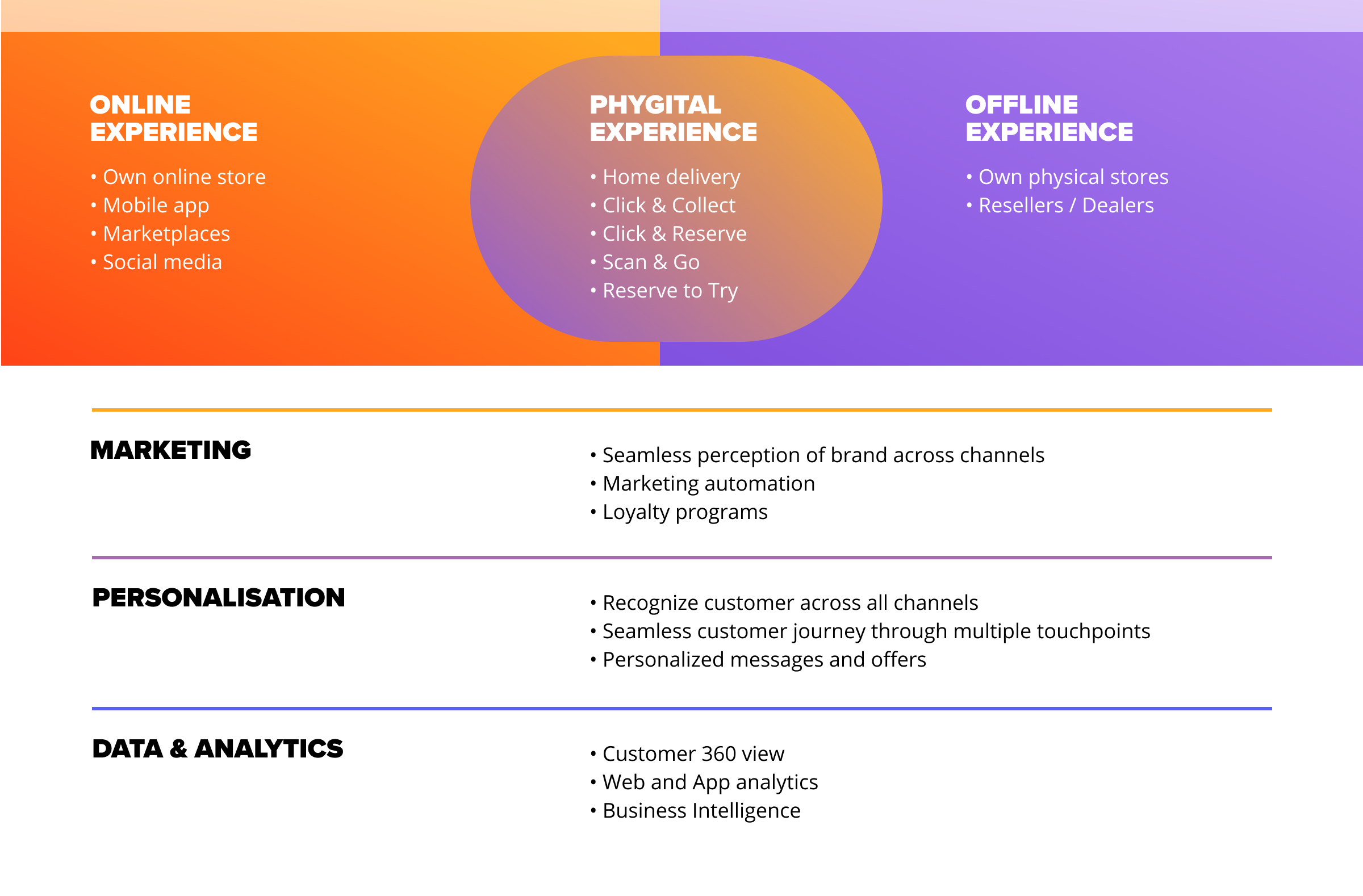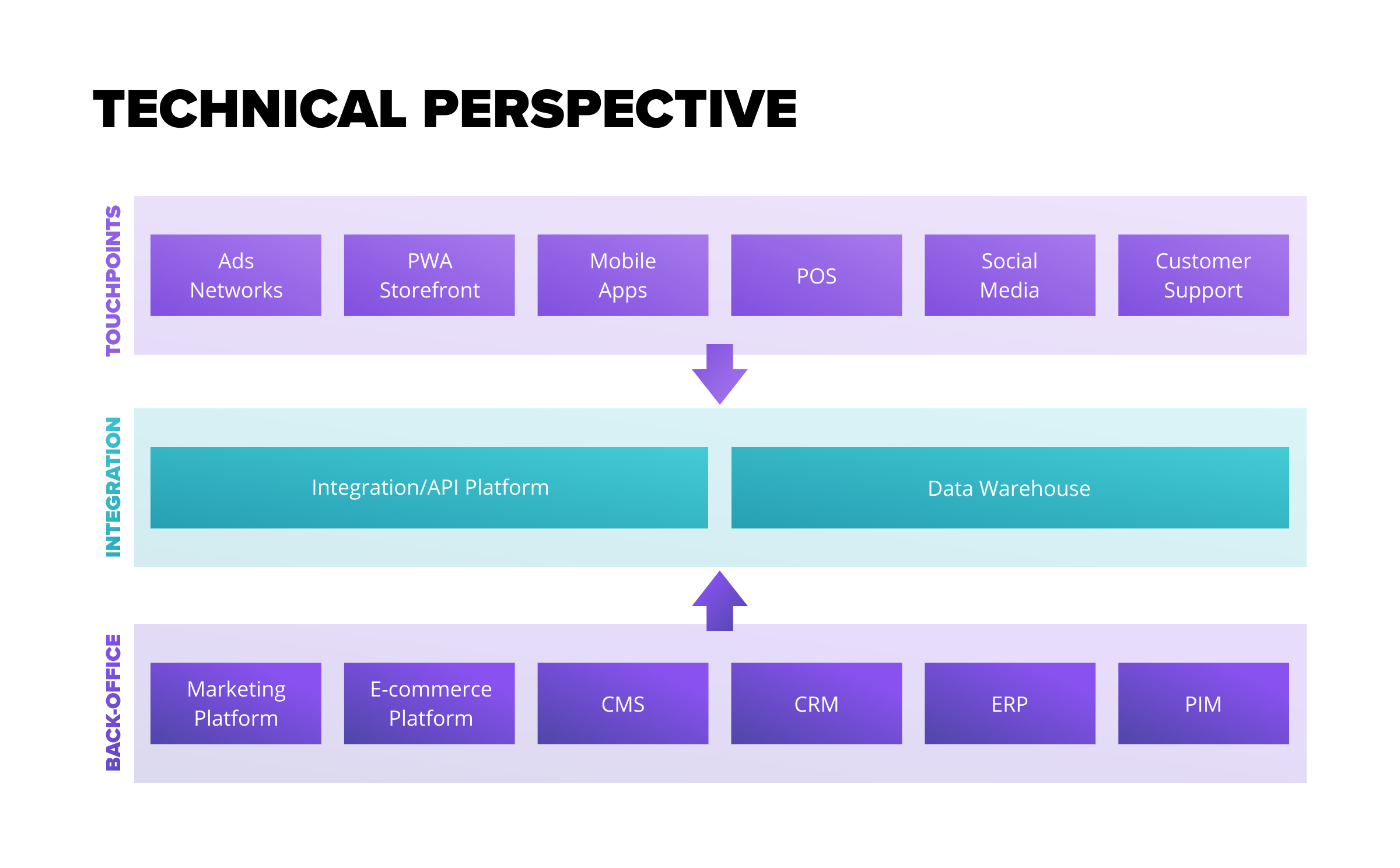
An omnichannel strategy is no longer optional. Customers move easily between online stores, physical locations, mobile apps, and social platforms, and they expect every interaction to feel consistent and connected.
By unifying channels and customer data, an omnichannel approach delivers a seamless, personalized experience that boosts loyalty and drives revenue.
In this article, we look at why omnichannel matters, the challenges it solves, and how SoftServe helps retailers implement it effectively.
WHY OMNICHANNEL IS KEY TO MODERN RETAIL SUCCESS
Retailers can operate in three main ways.
- Single-channel models rely only on physical stores, which limits reach and makes it hard to compete with brands that offer more flexibility.
- Multi-channel models add online stores or marketplaces, but these channels often work independently. A customer might see a product online but can’t pick it up in-store, or earn loyalty points in one channel that can’t be used in another.
- An omnichannel approach changes this completely. It connects all sales channels so they share the same information, including catalogs, prices, inventory, loyalty programs, purchase history, and even wish lists. Customers can start their journey in one place, continue in another, and finish wherever it’s most convenient.
This matters because today’s shoppers move between channels constantly. They may spot a product on social media, check reviews on mobile, visit a store to see it in person, and complete the purchase online later. If channels aren’t aligned, this journey becomes confusing. Price differences, inconsistent stock availability, or disconnected loyalty programs quickly lead to frustration.
An effective omnichannel strategy removes this friction and gives customers a smooth, familiar experience everywhere. It builds trust, increases engagement, and encourages repeat purchases. Retailers also benefit from better data visibility, more accurate demand forecasting, and stronger operational efficiency.
RETAIL’S BIGGEST OBSTACLES IN A DIGITAL-FIRST WORLD
The retail landscape is constantly evolving. COVID-19 accelerated existing trends, boosting e-commerce sales by 32.4% in 2020, while offline growth lagged. Even before the pandemic, retail was facing disruption: U.S. chains and malls were scaling down or closing, driven by the rise of online shopping.
Globalization compounds the challenge. With reliable mobile internet and widespread online services, over half of e-commerce purchases now come from international retailers. Competition is fierce, making it harder to enter new markets or retain customers.
Omnichannel strategies give retailers an edge. By providing a consistent and seamless experience across channels, they can attract new customers, retain existing ones, and expand into new markets more efficiently.
HOW OMNICHANNEL ADDRESSES THESE CHALLENGES
At the core of omnichannel is customer-centricity. By aligning digital and physical touchpoints, automating pathways, and leveraging data-driven insights, retailers can enhance engagement and improve operations.
Consider a retailer with only physical stores. Introducing online sales, integrated with in-store experiences, allows:
- In-store pickup for online purchases
- Reuse of existing store data for targeted offers
- Easier expansion to new markets with reduced risks and costs
Omnichannel also enables retailers to understand their customers better, sending more relevant and personalized offers.
However, implementing omnichannel isn’t just a business decision; it requires robust technical solutions.
WHAT MAKES AN OMNICHANNEL STRATEGY WORK

The first layer of an omnichannel strategy is made up of online, offline, and phygital channels. Online channels include websites, mobile apps, and social media shops, while offline channels cover physical stores and in-person interactions. Phygital channels blend the two, for example, allowing customers to order online and pick up in-store, or using in-store digital kiosks.
To make all these channels work together smoothly, they need a strong backend, built around marketing, personalization, and data analytics. Marketing ensures consistent messaging and promotions across channels. Personalization tailors experiences to each customer’s preferences and behavior. Data analytics provides insights to improve decision-making, optimize operations, and make interactions more relevant.
When these layers work in harmony, customers get a seamless, consistent experience no matter where or how they interact with your brand. But even though the idea is simple, many companies struggle with implementation. Outdated systems, fragmented processes, and a lack of experience with modern technologies can make omnichannel feel complicated. Overcoming these challenges is key to unlocking the full benefits of an integrated customer experience.
THE TECHNICAL FOUNDATION OF OMNICHANNEL

An omnichannel system can be thought of in three layers. At the top are the digital touchpoints, where customers interact with your brand. This includes physical points of sale, online stores, mobile apps, social media channels, customer support, email, and messaging platforms.
At the bottom is the back-office layer, which consists of all the systems that support business operations behind the scenes. Connecting these two layers is the integration layer, which ensures that data flows seamlessly between channels and systems. This is usually managed through a data warehouse and an integration or API platform, keeping all components in sync.
To stay competitive, retailers need a strategy that brings together both business and technical elements, connecting all customer touchpoints seamlessly. SoftServe supports this by combining deep expertise across the systems retailers rely on.
We work with e-commerce platforms like Magento, Shopify, Salesforce Commerce Cloud, and Hybris to ensure online stores integrate smoothly with other channels. Our experience with ERPs such as SAP and CRMs like Salesforce helps businesses manage operations and customer relationships efficiently. For content and personalization, we leverage CMS and DXP solutions like Sitecore, Episerver, and Adobe Experience Manager. And with marketing automation tools like Marketo and Sitecore, plus API platforms including Apigee, Mulesoft, and Kong, we enable retailers to connect systems, automate workflows, and deliver a consistent omnichannel experience across all touchpoints.
BOTTOM LINE
When executed properly, an omnichannel strategy helps retailers:
- Expand and optimize channels
- Enter new markets more efficiently
- Reduce operational costs
- Improve conversions and customer loyalty
Those who overlook even one part of the omnichannel structure, business or technical, risk losing their competitive edge.
With SoftServe as a partner, you can build and execute a reliable omnichannel strategy that supports internal operations, customer growth, and stronger loyalty across all touchpoints.
Start a conversation with us
